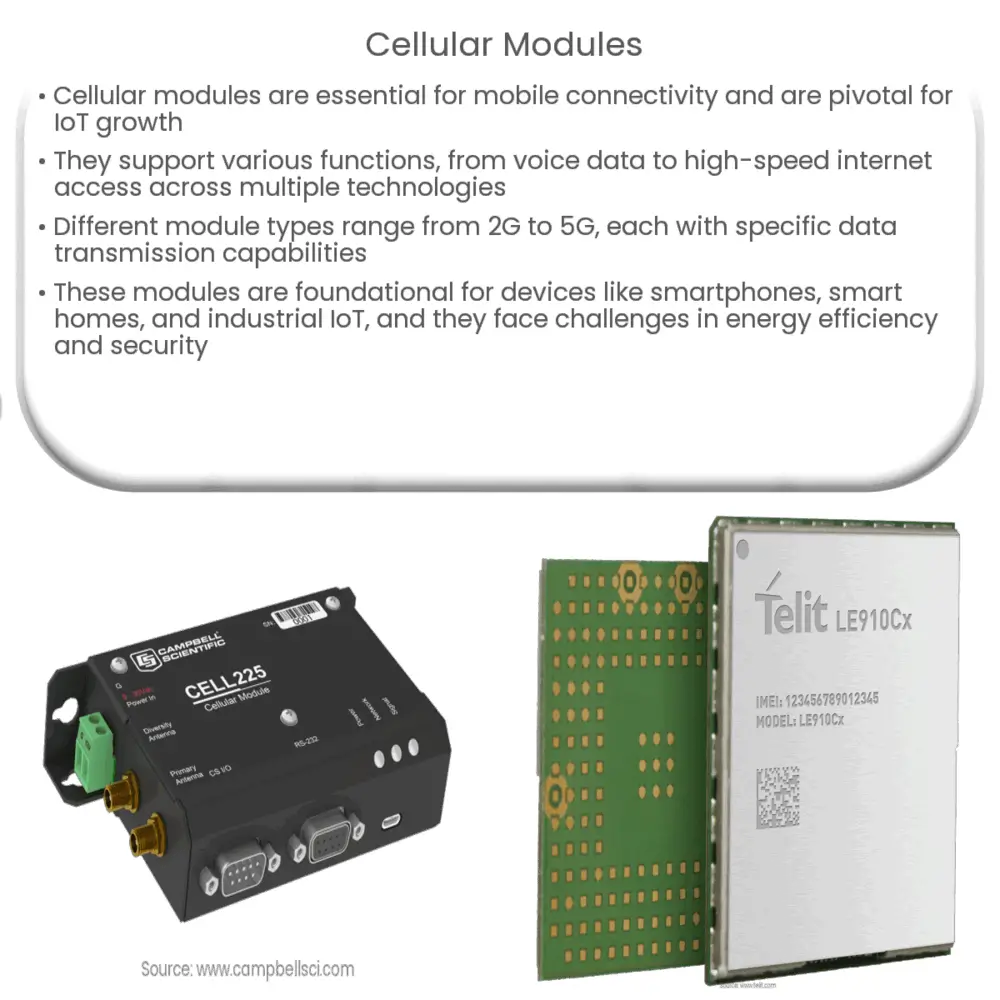Explore the role, types, and applications of cellular modules, their future prospects, challenges, and emerging trends in our connected world.

Introduction to Cellular Modules
Cellular modules are the core components in enabling mobile connectivity for a variety of devices. These are essentially self-contained units that are capable of handling all necessary tasks related to cellular communication, thereby offering wireless data transmission. They play a pivotal role in powering mobile technology and fueling the growth of the Internet of Things (IoT).
Functionality and Importance
Cellular modules handle a wide range of functions, including but not limited to, transmitting voice data, sending and receiving SMS, as well as connecting to the internet through GPRS, 3G, 4G, or even 5G technologies. They are integral to devices like smartphones, tablets, and a growing list of IoT devices that rely on seamless, dependable, and high-speed connectivity.
Cellular modules’ significance is largely tied to their capacity to enable connectivity. With the advent of IoT and the proliferation of smart, connected devices, cellular modules have become increasingly important. They allow these devices to connect with each other and with larger networks, facilitating data exchange and enabling a multitude of functions that make our lives more convenient and productive.
Types of Cellular Modules
- 2G Modules: Although they are gradually being phased out, 2G modules provide basic connectivity and low-speed data transmission.
- 3G Modules: These modules offer faster data transmission rates than 2G and are ideal for applications that require moderate data usage.
- 4G Modules: Delivering even higher speeds, 4G modules are perfect for high-data applications. They are the standard in many countries.
- 5G Modules: As the latest iteration, 5G modules offer ultra-high-speed data transmission and low latency, making them suitable for applications that demand real-time, high-volume data transfers.
Application of Cellular Modules
- Smartphones and Tablets: Cellular modules form the backbone of cellular connectivity in these devices.
- Automotive: In vehicles, cellular modules enable navigation, entertainment, safety features, and telematics.
- Smart Home: They are integral to smart home systems, powering devices like thermostats, locks, and cameras.
- Industrial IoT: In the industrial sphere, cellular modules facilitate machine-to-machine (M2M) communication, predictive maintenance, remote monitoring, and more.
Cellular modules are not just components; they are enablers of the connectivity that defines the modern world. In the next part, we will explore their future prospects and challenges.
Future Prospects and Challenges
As we move towards a future defined by a vast web of interconnected devices, the demand for cellular modules will likely increase. The advent of 5G and beyond is set to bring about significant changes in the way cellular modules are designed and used.
With 5G, the scope of applications for cellular modules will broaden significantly. Beyond smartphones and conventional IoT devices, they could find use in real-time applications such as autonomous driving, remote surgery, and smart cities. The increase in data speed and the decrease in latency brought by 5G can make these applications more efficient and reliable.
However, challenges remain. Energy efficiency is a major concern as IoT devices are often powered by batteries and expected to operate for extended periods without requiring a charge. There are also issues related to security, as more connected devices mean more potential points of failure. The development and standardization of secure communication protocols will be crucial in addressing this concern.
Emerging Trends
- Integration with AI: Cellular modules combined with AI could make devices more intelligent and adaptive, leading to better performance and efficiency.
- Miniaturization: The trend of making cellular modules smaller without sacrificing performance is on the rise. This will allow for more compact devices and potentially open up new application areas.
- Improved Security: New advancements are expected in terms of security features to keep up with increasing concerns about data privacy and protection.
Conclusion
In conclusion, cellular modules play a crucial role in enabling the connectivity that powers the modern world. Their importance will only grow in the coming years as we continue to embrace digital transformation and adopt an ever-increasing number of connected devices.
From enhancing our smartphones and tablets, to powering autonomous vehicles and smart homes, cellular modules will continue to evolve and innovate. While they face challenges such as energy efficiency and security, the rapid advancement of technology will likely provide solutions, pushing the boundaries of what is possible and shaping the future of communication.




